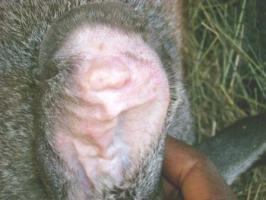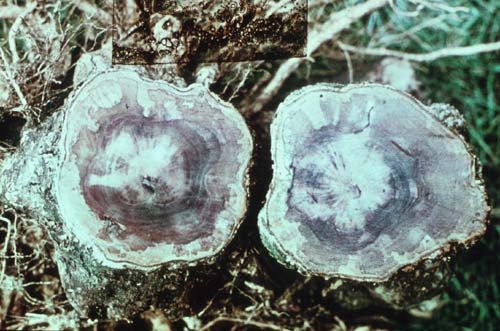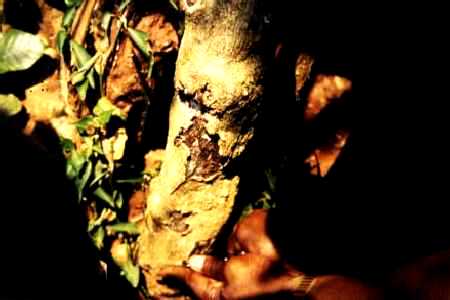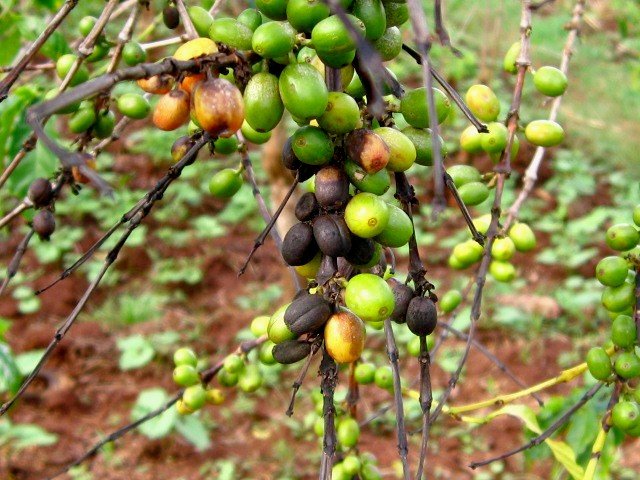Credits: Biovision-Infonet
Rabbits are coprophagous animals which means that they form two kinds of fecal pellets. One type is what the farmer will see on the floor of the hutch or below the cage. The other is the one that the rabbit swallows whole directly from the anus. Coprophagy is a peculiar physiological and natural habit which increases the digestive efficiency, especially from protein. The fecal pellets eaten contain three and half times more crude protein than the normal pellets which is probably why they instinctively eat these fecal pellets.
The feed conversion ratio of rabbit is considered to be half as efficient as that of cattle, due to the rapid rate of passage of food. More so because microbial digestion of fibre takes place in the hindgut rather than in the rumen. The digestive tract of a rabbit is known to be adapted to fibrous feed, but the hindgut is selectively able to excrete large fibre particles in feces, and retain the smaller particles. Rabbits are able to consume large amounts of forage – greens of many types – which people do not eat. They convert this forage into meat which people do eat. Anyone with fields or a garden will have maize stalks, sweet potato vines, fruit peelings, peanut vines, cabbage or lettuce leaves, carrot tops or any number of other greens in addition to lots of wild plants and kitchen garbage on which rabbits thrive. Many of these greens would otherwise go to waste. They would need, however, a bit of grain each day. If rabbits are not fed well they cannot give the best returns In large rabbit farms the bulk of expenditure incurred in breeding, producing and keeping rabbits is on concentrated feeds.
Interestingly, when available, rabbits prefer green fodder which is low in crude protein and is easily digestible. If they are forced to eat less preferred plant parts the feed intake may decrease drastically. The large capacity of the rabbits digestive organs enables it to compensate for seasonally lower concentrates in feed during cold periods and, during the warmer weather by a correspondingly higher intake. It is for this reason, accompanied by corpophagy, that the chances of survival during feed and water deficiencies are improved.
Rabbits can survive on a wide range of feed, thus enabling the keeper to adopt a feeding program to suit the prevailing local circumstances. There are different types of foodstuffs that are used as rabbit feed. On small holder farms, where pelleted feeds are not available and/or are to expensive, rabbits can produce on many kinds of available local feeds. In large rabbit farms, pelleted feed are most used which is more balanced and which will cut down on wastage.
Feeds can be grouped as:
- roughages, including hay, green leaves and weeds. As a precaution, if wild herbs are to be offered, a knowledge of poisonous plants is necessary.
- succulent foodstuffs, including green grass, carrots and other green food
- concentrates, including all cereals
- compounded feeds such as complete pelleted feed
Rabbits require different quantities of food at different stages of growth. In Table 1 is shown that rabbits producing milk and pregnant rabbits needs most feed (protein and minerals). Non-producing rabbits have least requirements. The amount of feed what should be supplied depends on the type of feed. A lactating doe will need 350g – 380g concentrates per day. When fed with green fodder, she needs much more and up to 1.5 kg (and takes with that feed also a lot of water). When hay is fed (with a lower energy content) she needs to eat 700 grams a day or more.
A pregnant doe requires 0.60 Mj digestible energy. That can be eaten in the form of green forage or as concentrates or as a mixture of both types of feed. Concentrated feed can be grains or other feed with a high feeding value (low moisture content). The maximum intake of a pregnant doe is about 600 grams of dry matter per day. From concentrates with 90% dry matter the doe will eat 660 grams to satisfy her needs. From fresh green grass with 25% dry matter, the doe has to take 2400 grams to ingest 600 grams of dry matter. That is a too big amount and part of the ration should consist of high dry matter feed (e.g. grains) According to table 1, the 600 grams dry matter should roughly contain 90 grams of crude protein, 12 grams of crude fat, 80 grams of crude fibre, 3 grams of lysine, 6 grams of calcium and 4 gram of phosphorus. There must be adequate amounts of vitamins A, D, E, K and B.
| Growth | Maintenance | Gestation | Lactation | Does & Litter | |
| Digestible energy (Mj) | 10.5 | 8.9 | 10.5 | 10.9 | 10.5 |
| Crude fibre (%) | 13 | 15 | 13 | 11 | 14 |
| Crude protein (%) | 16 | 12 | 15 | 17 | 17 |
| Crude fat (%) | 2 | ||||
| Calcium (g) | 4.5 | 6.0 | 6.2 | 9.2 | 9.2 |
| Phosphorus (g) | 2.6 | 4.0 | 4.0 | 6.0 | 6.0 |
| Vitamine A (IU) | 6000 | 12000 | 12000 | 10000 |
Minerals
Minerals are essential for proper growth and should include calcium, phosphorus and sodium chloride. On average the diet should include 0.5% – 0.7% phosphorus and 0.7% – 1.0% calcium. Lactating does require a slightly higher amount of phosphorus or calcium. It is a good idea to put minerals in the feed (for instance Coopers Macklic powder).
Vitamins
Vitamins are an integral part of the feed. In a mixed ration there will be enough vitamins to supply the rabbits needs. Vitamins are abundant in roughages. Concentrate feeds also contain vitamins.
Hay/straw
- Crude fibre is an integral part of the diet and is essential for
the digestive system and the well being of the rabbit. A good farmer
will notice that the rabbit eats much of its bedding during the night
and will replace it the following day when the pens are cleaned.
The average concentrate intake of an animal ranges from 120 g to 150 g per day. The concentrate feed should be supplemented with green food or hay. The roughage is best fed in the evening as rabbits are much more active at night. - Roughages and greens should be available all the time. Rabbits eat most vegetable matter such as potato and carrot peelings, vegetable scraps etc. They thrive on weeds (especially chick weed, amaranth and thistles).
- Other examples of good rabbit feed include lucerne, chopped napier grass, sweet potato vines and fresh green grass if it is available.
- After the rains there is usually an abundance of wild herbs and weeds that rabbits will enjoy but ensure at all times that your rabbits have a varied diet of roughage and greens.
Concentrates (rabbit pellets or rabbit mash) should be fed twice a day as follows:
- 0 – 16th week after weaning give 65 – 100 g/day
- Pregnant does give 225 g/day/doe
- Active Buck give 90 – 100 g/day
It is recommended that a square piece of plastic or sacking is placed under the feed bowl to catch and reuse spilled feed. The most food and water efficient food bowls are made of clay with an inward lip. These are too heavy for the rabbits to turn over and the lip prevents spillage. The water bowls should be scrubbed at least once a week to prevent algae growing. This will foul the water.
NOTE: Do not feed rabbits with tops of tomato or Irish potato nor with mint as they are poisonous.
Feeding Time
Rabbits are very ‘time conscious’! They expect food at the appointed time and you may find them waiting by their doors at that time. A haphazard feeding schedule will cause distress to their digestive system. It is best to feed them twice a day: morning and evening.
Cleanliness and Hygiene
Feed, bedding and water should all be fresh. If concentrates are fed they should be stored in weather/vermin proof containers (drums with lids and old deep freezes make excellent feed stores). Keeping the feeders and water bowls clean can yield dividends to a farmer. Failure to maintain hygienic conditions will result in frequent disease outbreaks.
Tip: A spray bottle of 50/50 white vinegar and water makes a gentle disinfectant for wiping off surfaces and reducing odour.
Economic feeding of rabbits
A balanced diet made up of high quality feed ingredients, and hay, is recommended for use in large scale units. Mash feeding alone might lead to a low conversion ratio resulting in higher feed intake. That can only be economically interesting when feeds are low in price.
Most rabbit farmers in East Africa are dependent on commercially made complete rations. Efforts should be made to supplement this with green roughage, depending on availability. This will go a long way to keeping the cost of feeding down, as this is a major expenditure for the small farmer and should be kept at the barest minimum without compromising the requirements and welfare of the rabbits.
Water
Rabbits need plenty of fresh water. It is wrong to assume that rabbits obtain sufficient water from their green food. Rabbits consume a surprising amount of water and it is important that this is readily available. Place a small water bowl with a solid base to avoid being overturned in each cage, and fill the bowl with water twice a day. Alternatively, in large enterprises a drip water system could be useful. This is more expensive, it saves time, the rabbits have water at all times they learn very quickly how to use it



